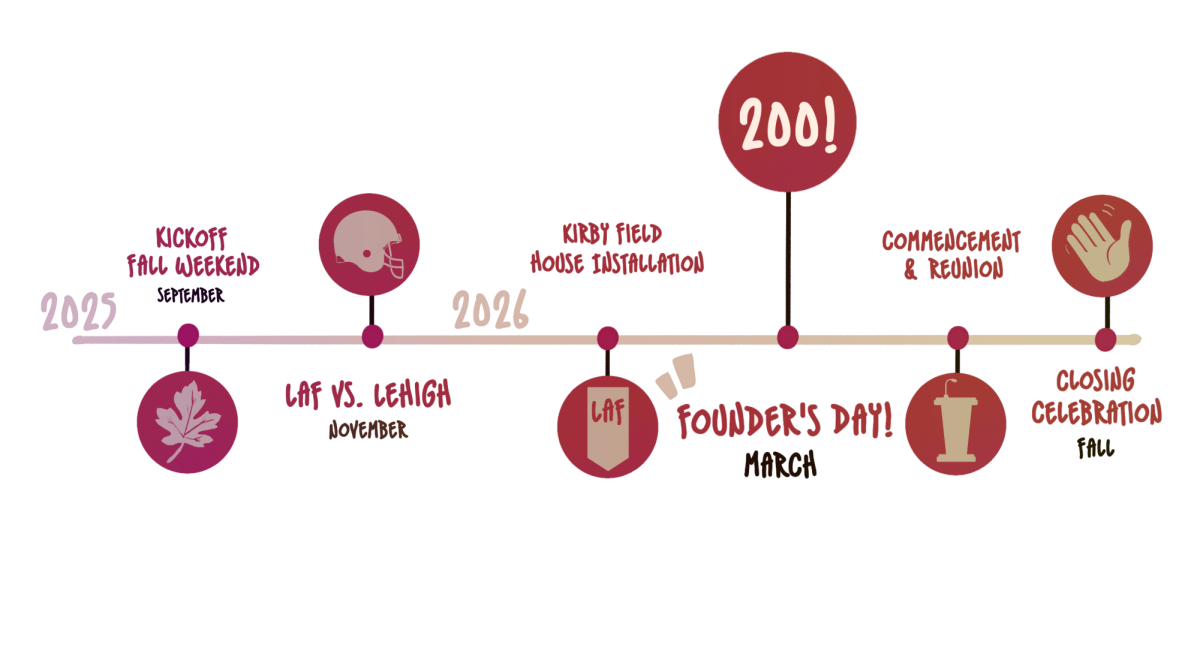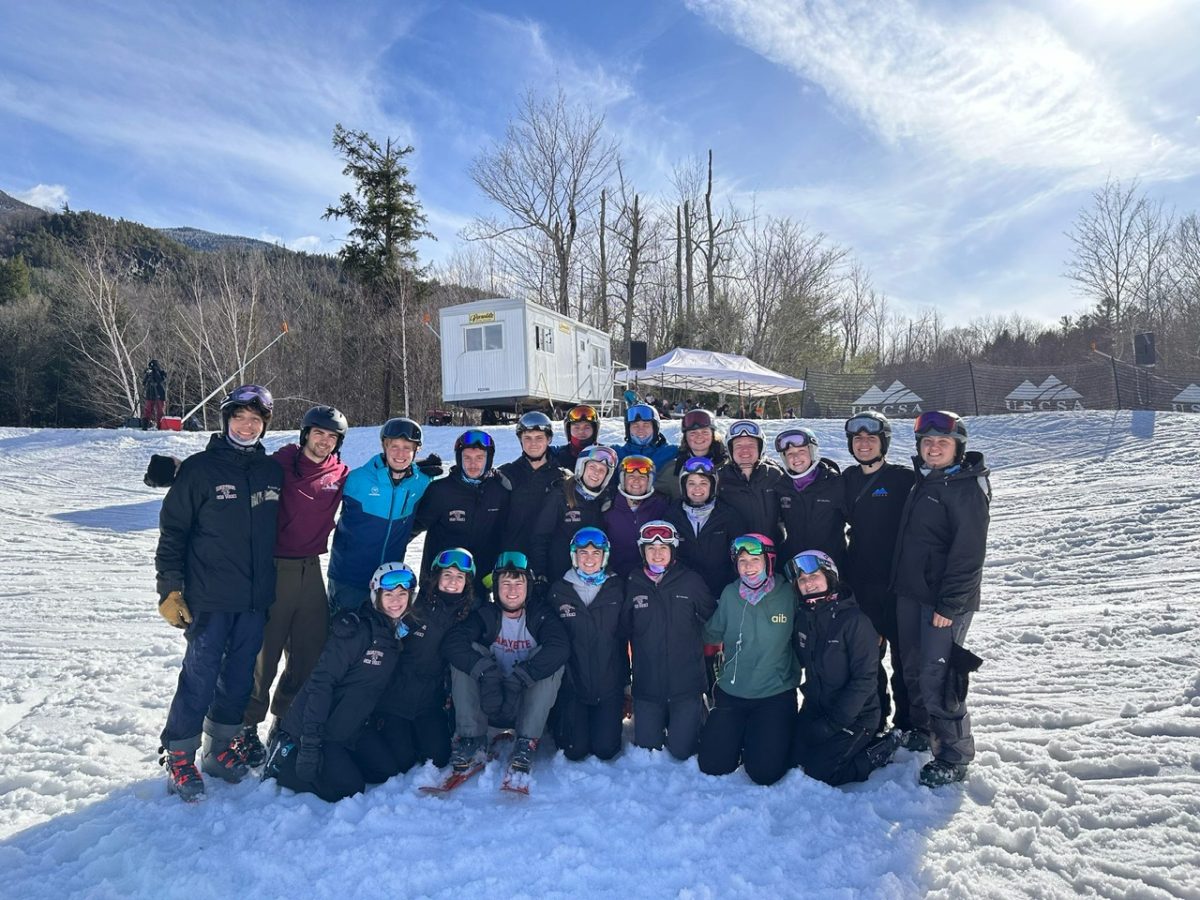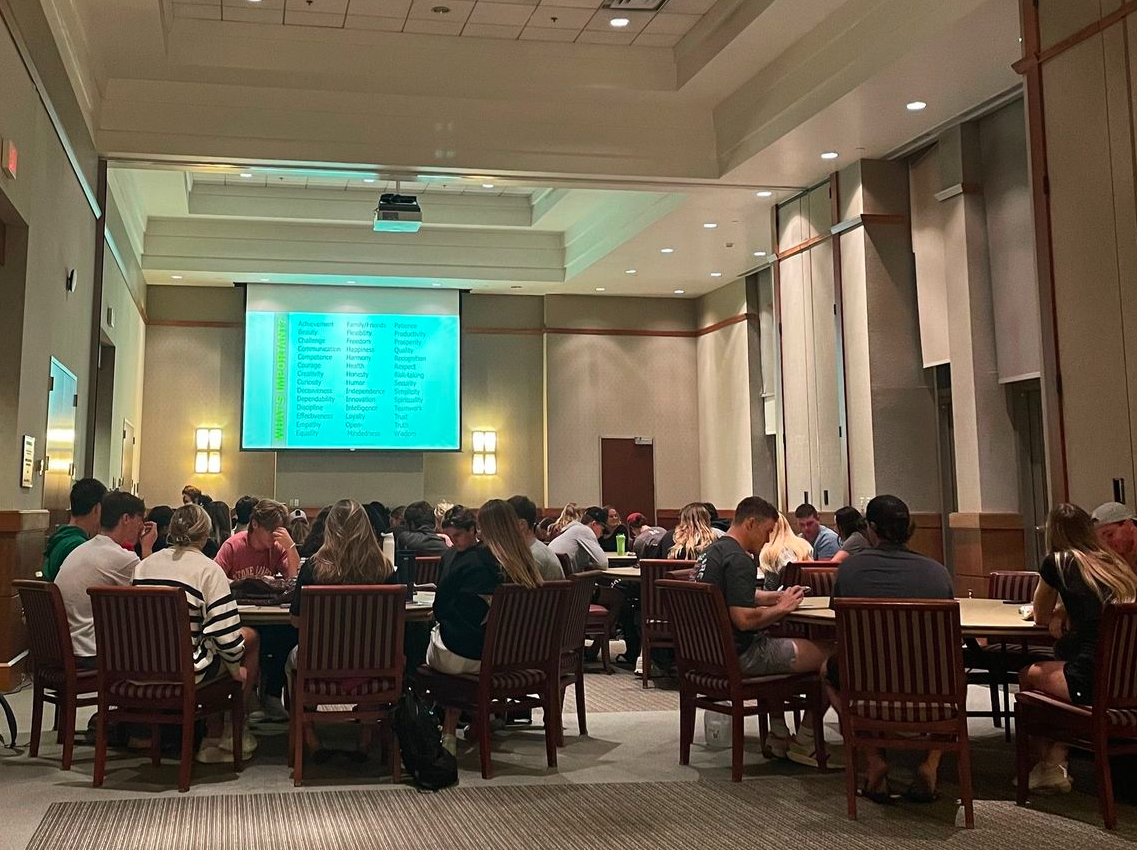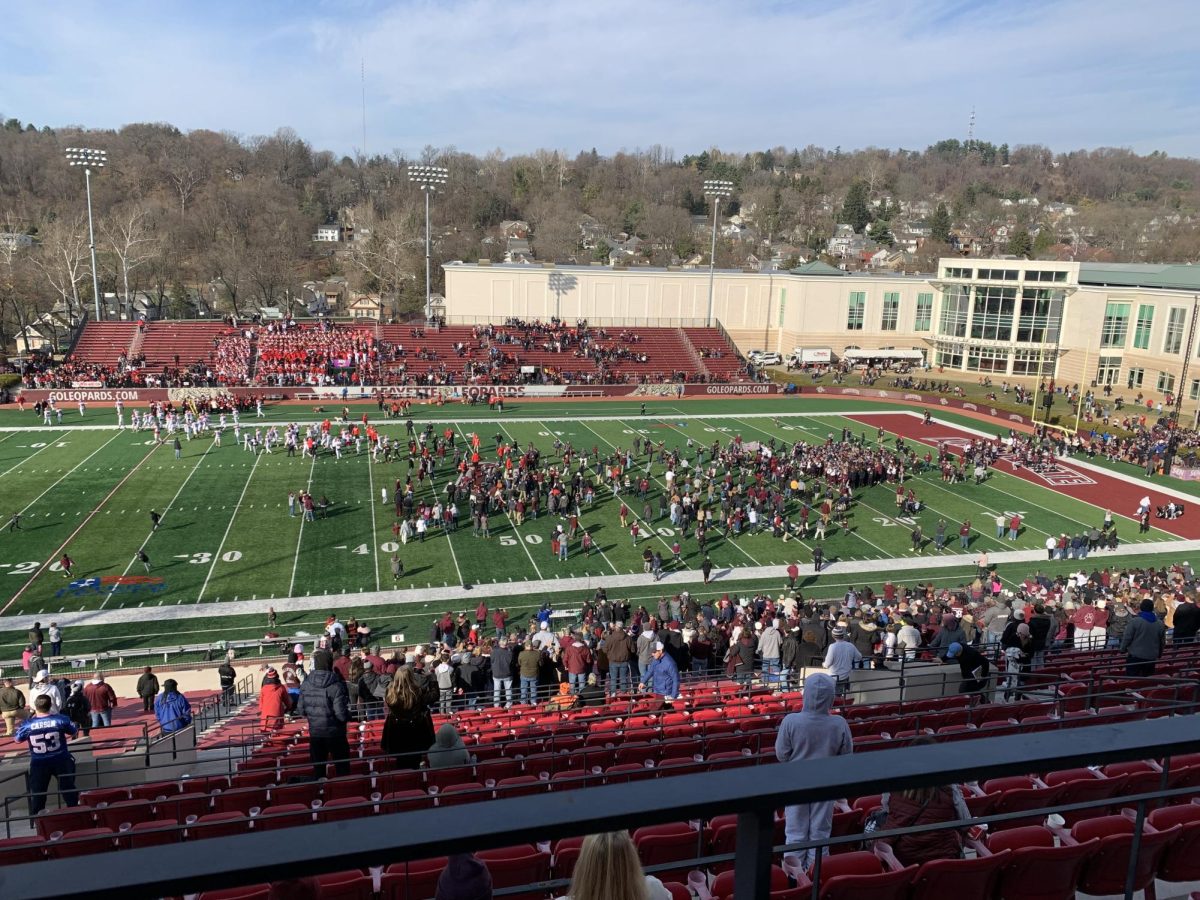Where the mountainside glows: Geology Society visits Sterling Hill Mine
Sterling Hill Mine’s underground tour features rocks that glow under UV light. (Photo courtesy of Caroline McParland ’23)
November 5, 2021
When the lights are on in Sterling Hill Mine’s famous Rainbow Tunnel, visitors will find plain white rocks scattered throughout the walkway. However, when the lights go off, the room instantly transforms. These same rocks become illuminated with every color of the rainbow.
On Friday, around 30 students from Lafayette’s geology department and the Geology Society of Lafayette (GSoL) visited the Sterling Hill Mine Tour and Museum of Fluorescence in New Jersey to view these special rocks.

Sterling Hill Mine was chosen for the trip due to its proximity to campus and its large collection of minerals. The excavation is about 2,500 feet deep and houses more than 12,000 minerals. More than two dozen of the minerals found in this mine have not been found anywhere else in the world.
“The rock is really neat, and I say that with a little bit of a comedic flare,” Geology Professor John Wilson said. “It is so cool to go and see what looks like a plain white rock with little red and black specks in it, and then all of the sudden the room goes dark and the UV lights go on and you’ve got reds and blues and greens. Where did that come from? It’s just so great to see something that’s unexpected like that and that’s what made it really exciting.”
Students on the trip engaged in discussions about the region’s geology, mining resources and the various uses of the metals being mined at Sterling Hill.
Still, there’s one question on everyone’s mind: how do these minerals glow?
The rocks’ fluorescence comes from ultraviolet (UV) light, a trick accidentally discovered by miners in the early 1900s and used to find rich mineral deposits.

“UV energy goes into the mineral, and the elements that make up the mineral get excited. When elements get excited the electrons jump shells. They go from their standard state to an excited state. The electron can’t hold that excitement so it falls to its original state,” Wilson explained.
When the electrons fall back to their original state, the minerals produce light of all colors on the spectrum. Students saw this concept brought to life during the 1,300 foot tour inside the Sterling Hill Mine.
Gianna Greger ‘23, president of GSoL, found the trip to be helpful in conceptualizing issues surrounding the mining industry.
“After the trip, our members conversed about the large-scale consequences of mining, the fossil fuel industry and resource consumption discussing real life examples from the mine,” Gregor wrote in an email.
Mining and the fossil fuel industry pose serious threats to the environment, including the loss of biodiversity, contamination of water and erosion.

“As students studying or interested in the environment, it is important for us to continue to work on understanding, innovating, and implementing sustainable initiatives to incite change, educate others and protect our natural capital,” Greger wrote.
Additionally, the trip was used as an opportunity to scout for fluorescent rocks to be brought back to campus as part of Van Wickle Hall’s growing rock garden later this year.
Students interested in joining these conversations can find the Geology Society of Lafayette on Instagram @gsol_laf or on OurCampus.







































































































